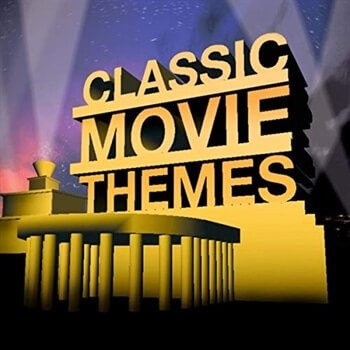
Concept Of themes In Movies, Explained.
What Is The Difference Between Major and Minor Themes?
A major theme is an idea that a writer repeats in his literary work, making it the most significant idea in the work. A minor theme, on the other hand, refers to an idea that appears in a work briefly, giving way to another minor theme.
Can a theme be one word?
As a literary device, theme is the central topic or idea explored in a text. Usually the theme of a work of literature can be stated in one word, such as “love” or “solitude.” The theme is generally not stated explicitly in the text, but instead is expressed through the characters’ actions, words, and thoughts.
What is the common theme?
A theme is the main idea, or message, of an essay, paragraph, or a book. The message may be about life, society, or human nature. Themes often explore timeless and universal ideas and may be implied rather than stated explicitly. … Authors often have common themes within several different stories they have written.
Why is a theme important?
Themes are the central focus of the story or narrative. Themes express the intended lesson, conclusion, message, or point of view of the author. Themes connect all the parts of the story such as characters, plot, problem (conflict), setting, and event(s). A theme keeps the writer on point.
What Is a Theme in Movies?
A theme is the film’s central, unifying concept. A theme evokes a universal human experience and can be stated in one word or short phrase (for example, “love,” “death,” or “coming of age”). The theme may never be stated explicitly, but it is exemplified by the film’s plot, dialogue, cinematography, and music.
Can a film have multiple themes?
A story will often have more than one theme, especially if it’s a novel as opposed to a short story. Short stories, due to their length, tend to only have one major theme, while a longer novel has time to elaborate on several themes at once.
What makes a movie great? The answer is not one particular thing. It is different elements all working together—from the plot, dialogue, and actors’ performances to the cinematography, soundtrack, and directing. These elements all work together towards a common goal: the deep, resonant feeling that helps the movie say something about the world or human nature. This is known as the film’s theme.
What Is the Purpose of a Movie Theme?
For the audience, the theme provides a universal way to engage with the film’s specific subject matter. Strong themes are also what make a film stick with you long after the initial viewing. For filmmakers, the theme is the main idea and a guide during the creative process. When choosing between different possible plot developments as you write, you can ask yourself, “Which option relates more to my theme?”
10. Classic Movie Themes, Why They Matter?
Good themes speak to profound and shared elements of the human experience, so it’s only natural that certain common themes reappear in many movies. Here are some examples of common themes:
- Love. Who doesn’t enjoy a good love story? The movie Titanic is built around the theme of love (right down to its Oscar-winning theme song). Love can conquer incredible obstacles, like class divides, disapproving family members, and disaster. The experience of love sparks transformation in a film’s characters. Rose awakens in her understanding of the world’s inequities and discovers her independence. Jack evolves from a charming and directionless wanderer to someone with a deep purpose, risking everything for the person he loves.
- Humanity vs. technology. Science fiction offers particular opportunities to explore anxieties about technology. 2001: A Space Odyssey provides a masterful example. In the prehistory sequence, the bone club, an instrument for killing, appears as the first major technological. Breakthrough of our species. In the future, much of the human interaction we see has been reduced to long-distance communication through view screens, and a spaceship’s intelligent computer attempts to murder its human crewmates. Finally, a god-like alien intelligence appears not as feeling and anthropomorphic, but as a cold, black monolith, as efficient and inscrutable as any machine.
- Sacrifice. The Lord of the Rings trilogy has several different themes throughout it, but the most unifying is that of sacrifice. While Sauron and Saruman are defined by their lust for power, the heroes—like Gandalf, Sam, and Frodo— Distinguish themselves through their willingness to sacrifice themselves for others and the greater good. Even flawed characters like Boromir are redeemed through the virtue of sacrifice.
- Good vs. evil. The main theme of the Star Wars saga is good vs. evil and the series provides an excellent demonstration of how all the elements of cinematic language can support a central theme. The good and evil characters are identifiable not only by their words and actions but by visual design. The Rebels and the Jedi are a diverse group of humans and aliens, clad in earthy, natural tones. Darth Vader and the rest of the Empire are cold, shiny, and uniform, a machine-like hegemon that crushes the individual.
- Death. Certain types of themes lend themselves to certain genres. In the heightened reality of the American Western, disputes quickly escalated to gunplay, and death was dealt casually by white hats and black hats alike. Traditional Westerns sometimes rely on death merely for stakes or as an efficient plot resolution, but revisionist Westerns have offered deeper explorations of the theme. In Lonesome Dove, Unforgiving, and No Country for Old Men, we’re reminded that death isn’t always just or fair—inevitably, it comes for us all.
- Perseverance. In Rocky, the main character is an underdog who triumphs over long odds through determination and hard work. Again, this theme is reinforced not only through the plot and dialogue, but with tools unique to the movie medium, like the montage. (Who can forget the memorable montage of Rocky training, punching slabs of meat, and dashing up art museum steps as a choir on the soundtrack sings an anthem to tenacity: “Trying hard now. Gettin’ strong now… Gonna fly now.”) Ultimately, the film declares that perseverance is a victory more important than winning in the ring.
- Coming of age. The Harry Potter series illustrates this theme not only because the cast literally ages in front of our eyes throughout the films, but also because the fundamental experiences of growing up are woven into the narrative. Harry grows beyond depending on older people and steps into an adult role when he becomes the leader of “Dumbledore’s Army”; he experiences a loss of innocence when witnessing the deaths of Cedric and Sirius; and, perhaps most importantly, gains a more complex understanding of the world when he learns more about both Dumbledore and Snape.
- Family drama. Tolstoy famously wrote that “Happy families are all alike; every unhappy family is unhappy in its own way.” Perhaps it’s no surprise then that so many engaging stories revolve around family strife. We all struggle to become independent from our parents and invariably inherit a great deal from them, both literally and metaphorically. The Godfather begins with Michael Corleone firmly committed to a life distinct from his father’s, but over the story’s long arc, Michael assumes Vito’s mantle. In Back to the Future, Marty McFly feels an unbridgeable gap between himself and his parents and scorns their ideas for his future, until he travels back in time to meet them as teenagers, and realizes he has much more in common with them than he thought.
- Reason vs. faith. Raiders of the Lost Ark are as thrilling and action-packed as any James Bond movie, but its thoughtful theme elevates it above most other adventure films. Indiana Jones is an academic and a skeptic, a man of reason who rejects “superstitious hocus-pocus.” But over the course of the film, he’s forced to confront a divine force that defies explanation, embodied by the Ark. In a quite rare turn for an action hero, he seems to fail in his quest to defeat the villains and save the heroine when he can’t bring himself to destroy the holy relic. And yet in the film’s climax, Indy succeeds by closing his eyes and accepting an otherworldly power. The musical motif that John Williams dedicates to the Ark is simultaneously haunting, ancient, and grand, perfectly evoking this feeling of a God who can never quite be known or rationally explained.
- Justice. Decade after decade, film adaptations of the Robin Hood legend, The Adventures of Robin Hood, Disney’s Robin Hood, and Robin Hood: Prince of Thieves, among many others, spins an adventure story around this deeply resonant theme. In a time when the normal systems of justice have been corrupted, allowing the powerful to exploit the weak and the wealthy to leech off the poor, the hero becomes an outlaw so that true justice can prevail.







